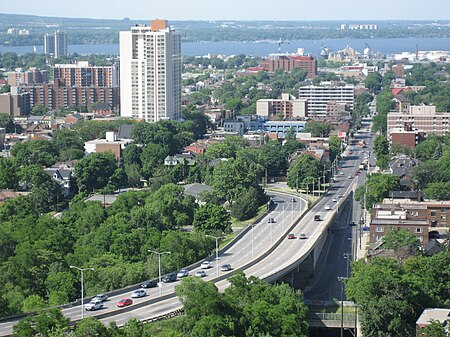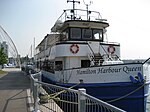Victoria Avenue (Hamilton, Ontario)
Roads in Hamilton, Ontario

Victoria Avenue is a Lower City arterial road in Hamilton, Ontario, Canada. It starts off as a ramp and part of a Mountain-access road, the Claremont Access, on Hunter Street East in the Stinson neighbourhood. It's also a one-way thoroughfare that flows north through the Landsdale and the city's North End industrial neighbourhood past Burlington Street East where it ends at Pier 11.
Excerpt from the Wikipedia article Victoria Avenue (Hamilton, Ontario) (License: CC BY-SA 3.0, Authors, Images).Victoria Avenue (Hamilton, Ontario)
Wellington Street North, Hamilton
Geographical coordinates (GPS) Address Nearby Places Show on map
Geographical coordinates (GPS)
| Latitude | Longitude |
|---|---|
| N 43.2648 ° | E -79.8546 ° |
Address
Wellington Street North 363
L8L 2X2 Hamilton
Ontario, Canada
Open on Google Maps







